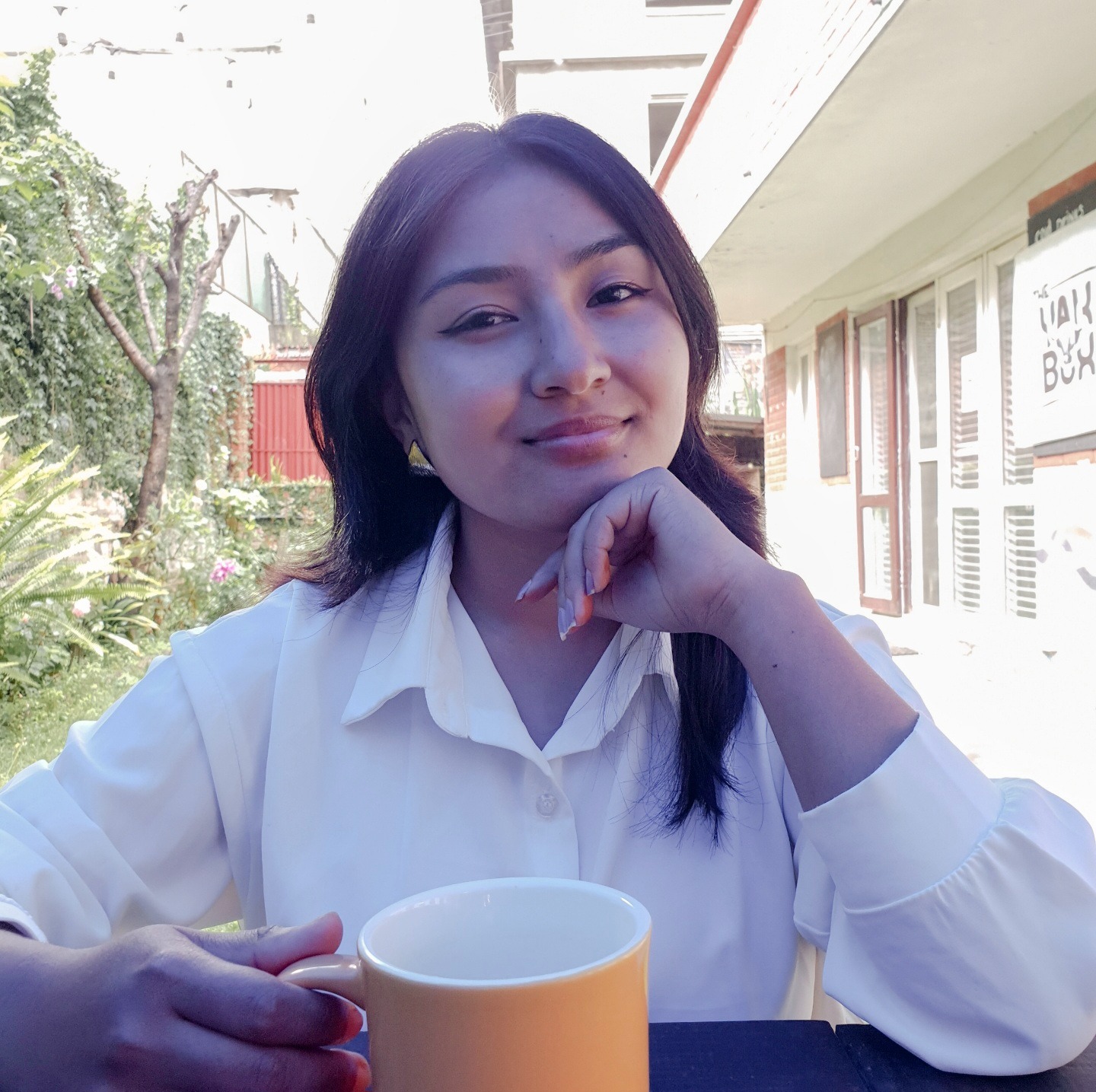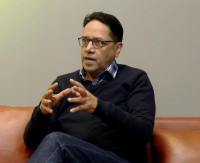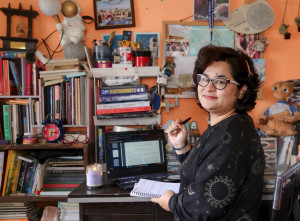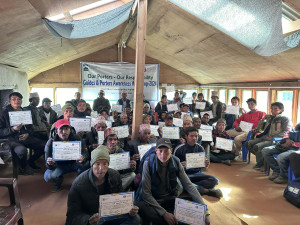Culture & Lifestyle
Stories of struggle and resilience
‘Feminist Futures’ is a powerful exhibition featuring 10 South Asian women artists who challenge patriarchy, colonial legacies, and socio-religious constructs.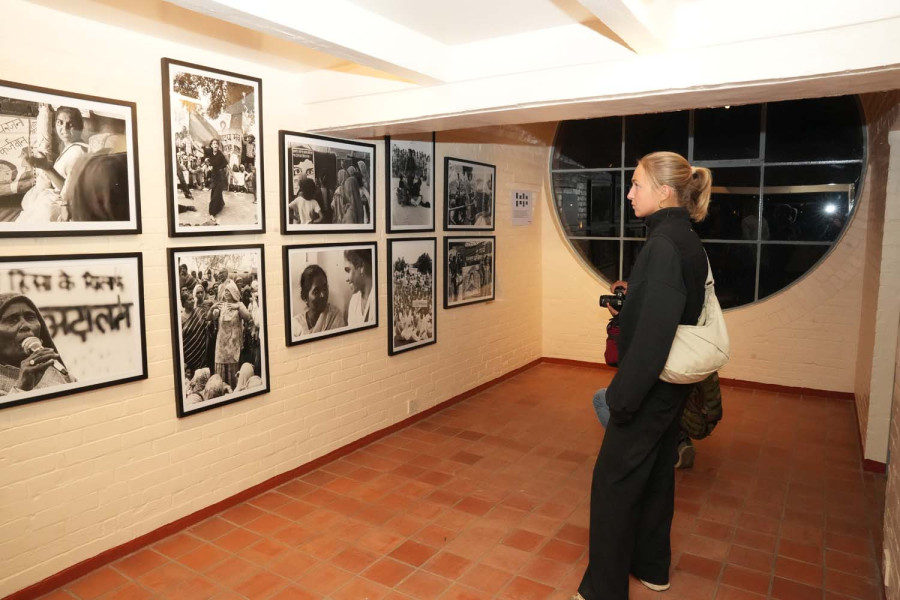
Timila Maharjan
‘Feminist Futures: Art, Activism and South Asian Womanhood’ is an ongoing exhibition at Taragaon Cultural Center by 10 women artists from different South-Asian countries, including Nepal. The exhibit, curated by Arshiya Lokhandwala, tells the stories and realities of women across the global south and explores the themes of patriarchy, colonial legacies and socio-religious constructs through the lens of art and activism.
Each artist presents their unique story in the exhibition through different forms. Artists from Nepal, Sri Lanka, India, Pakistan and Bangladesh showcase their unique narratives of womanhood while addressing issues of identity, justice and resilience. The exhibition challenges audiences to engage with urgent questions of gender and power, acting as both a call and a space for solidarity as they navigate and challenge deeply entrenched hegemonic societal framework.
According to the curator, this exhibition is the first of the four exhibitions planned to be exhibited in Nepal this year. The remaining shows will be very distinctively different from each other, are in the preparation phase, and will be announced in the upcoming days. She shares, “It’s not only about Nepal but also looking at women's issues in South Asia in countries like India, Bangladesh, Sri Lanka, and Pakistan. Still today, we see many cases of women being murdered, raped, assaulted and made victims of other different forms of violence.”
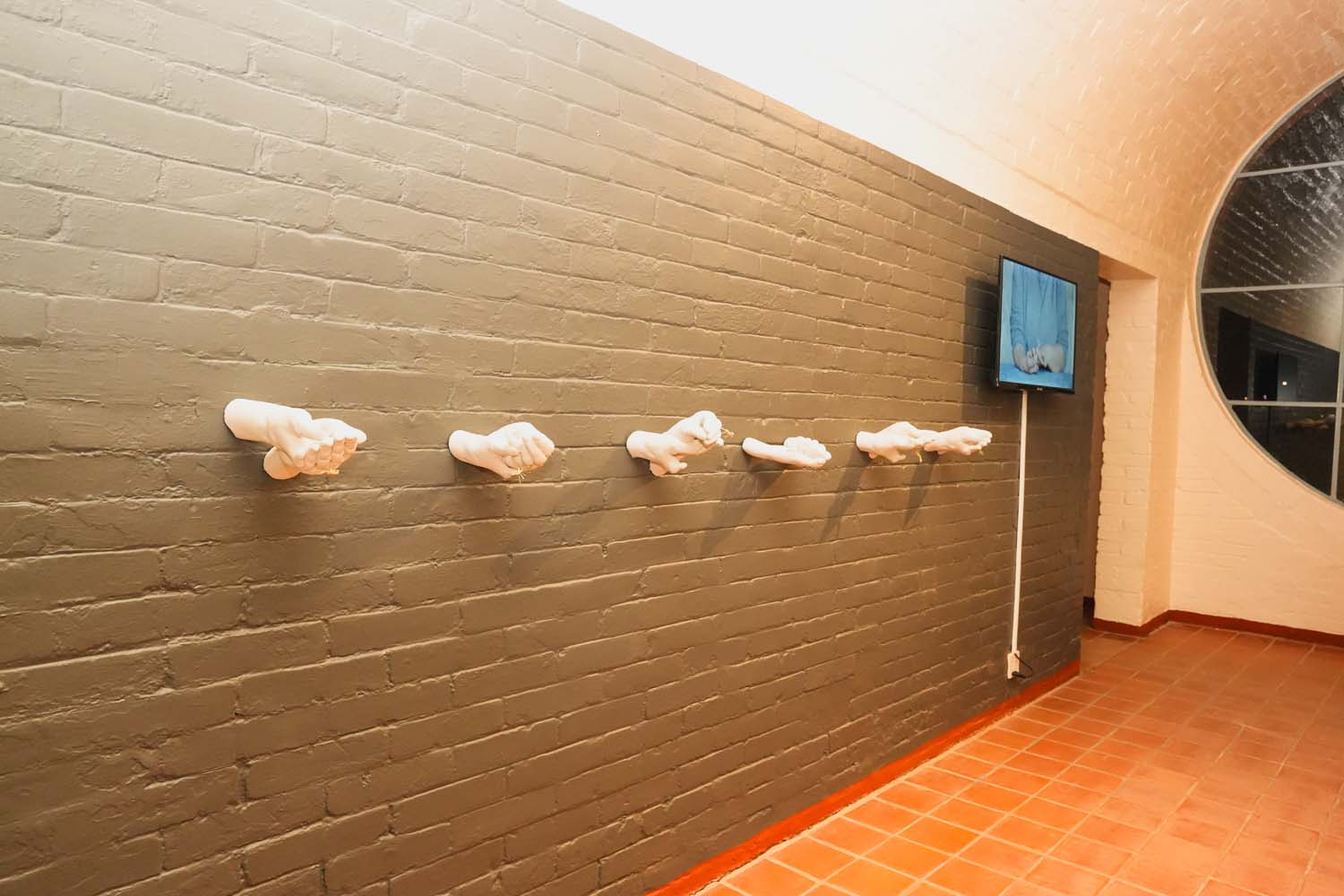
Each installation tells a different story from a different context, country and perspective but about the same violence, injustice and inequality women face in this patriarchal society. The exhibition starts with Pushpamals N’s (India) works based on Sita’s abduction by the demon Ravana named ‘Apaharana/Abduction 2012’ from her series ‘Avega-The Passion’. The series of photos depicting this incident from the mythological Ramayana shows the violence and treatment of women in contemporary society, which has been continued from the past. Lokhandwala shares that N’s work signifies the importance of reading and understanding mythologies and unpacking the things around us.
Likewise, Tayeba Begum Lipi’s (Bangladesh) multimedia works critique the dualities of marriage. In her video installation of ‘I Wed Myself’, she dresses up as both bride and groom, interrogating societal paradoxes around marriage. Her other works ‘Wedlock (2024)’ and ‘Garland of Wedding (2025)’ showcase huge safety pins and garlands of razor blades as metaphors for the duality of marriage and its potential for connection and its capacity for control that could also lead to violence or harm.
The multimedia works of Ashmina Ranjit (Nepal) rebel against the patriarchal norms and practices that confine women’s lives. Her performance ‘Sita! The Ideal Wife?’ (2025) critiques the Hindu tradition of Kanyadan (the giving away of the bride) codified in the Manu Smriti. Central to this performance is the mythological figure of Sita, an idealised construct of the ‘perfect woman’ who epitomises submission, obedience and unwavering loyalty. Ranjit says. “This performance is not just my story; it is the collective story of countless women forced to embody the oppressive ideals of ‘Sita’. The work highlights the loss of agency women endure within marriage and caste structures.”
Likewise, her performative video ‘Damal’ (2024) draws from the historical Muluki Ain of 1854, which legalised caste-based punishments, embedding societal hierarchies. This immersive video shows her draped in a black cloth, which she is trying to come out of. Her cries and screams can be heard, and the projection of the Muluki Ain’s acts legalising caste-based punishment in the background is being done. This paradoxical but powerful performance lets the audience feel and imagine the oppression caste-based discrimination brings.
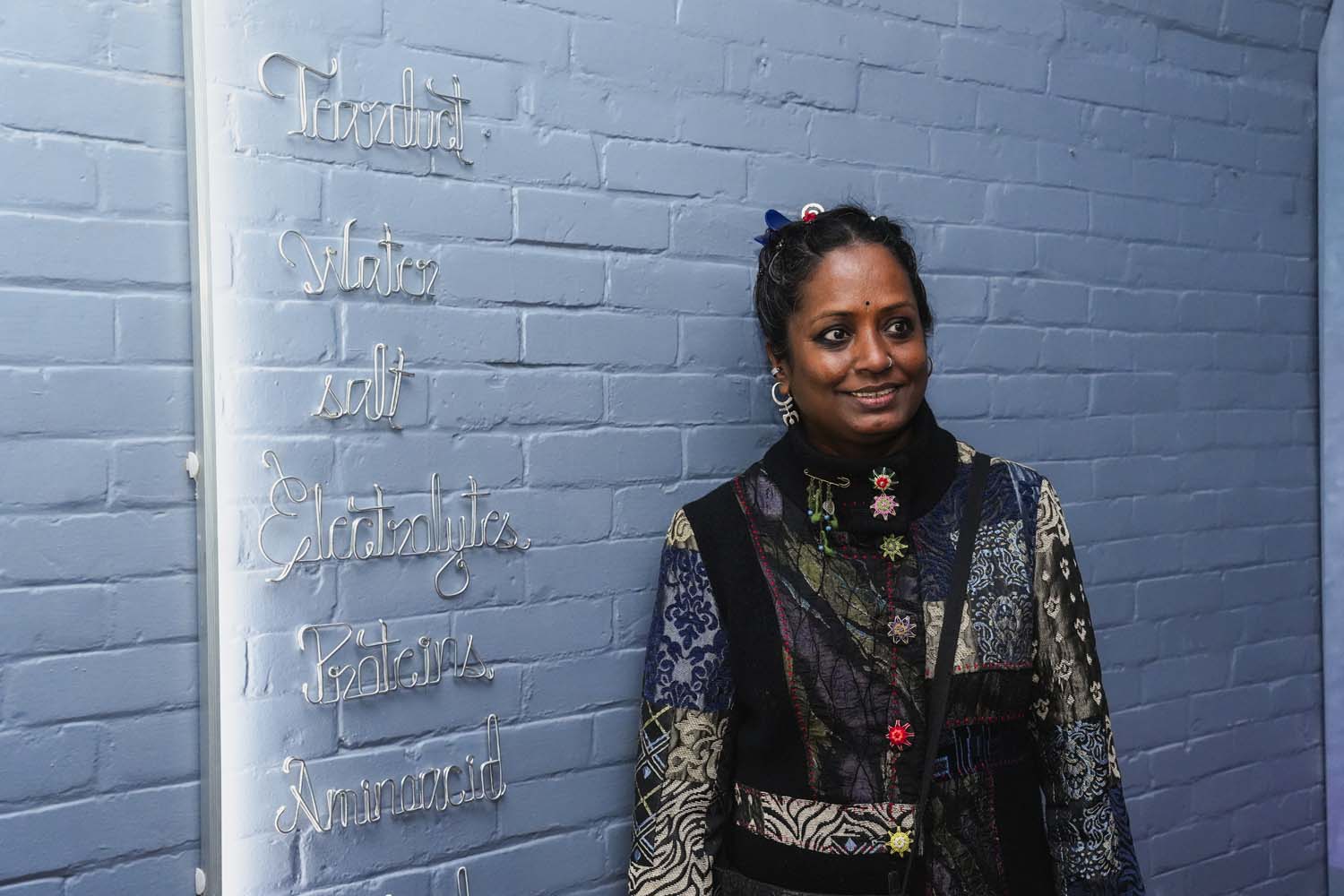
Sheba Chhachhi’s (India) works embody feminist interventions within urban spaces. Her photographic series ‘From the Barricades’ reflects her activism within India’s women’s movement during the 1980s and 1990s, while her video work ‘Moving the City’ (2016) portrays single women navigating patriarchal urban environments: on metro stairs, road dividers, inside mall etc. blending movements from yoga and dance to reveal the contradictions of autonomy and control. Lokhandwala shares, “Chhachhi’s work shows how the body is controlled in the public space, and she is trying to create a space where a woman is free to be whatever she wants.”
In ‘My Left is Right’ (2022), Bidhata KC (Nepal) critiques the stigmatisation of the left hand in Hindu culture, challenging the validity of rituals performed by women with the left hand. She shares her own story of using her left hand for all rituals and asks whether that makes the rituals fruitful or not. The video of her story and the installation of her hands sculptures in different postures used in the Hindu rituals make the exhibition engaging and interesting.
Likewise, her performance installation, ‘Chori Manche Bhayera…….Keti Manche Bhayera…….(2023) invites women to share their aspirations and restrictive gender roles imposed by socially constructed phrases like ‘Chori Manchey Bhayera’ (being a daughter/girl).
Mithu Sen’s (India) ‘Who will write a history of tears?’ (2025) comprises two videos which reframe tears and scars as forms of resilience and resistance. Her works redefine women’s vulnerability as power. Her performance critiques the paradoxical nature of ‘wet ontology’ where the absence of tears challenges societal and cultural expectations of visible grief, particularly as it pertains to gender.
Anita Dube (India), Naiza Khan (Pakistan) and Anoli Perera (Sri Lanka) explore the female body as a political and empowering site. Dube’s ‘Eye Photos’ (2002-2012), made using votive eyes, confront institutional power, demanding the dismantling of male-dominated structures and systems. Lokhandwala shares that the eye photo series also rebels against the male gaze that women get by looking them back but in an entirely different way from the eyes of God.
Khan’s ‘Heavenly Ornaments’ (2007-2009) and ‘Henna Hands’ (2002-2022) critique women's clothes like armour and lingerie made from materials like latex, leather, metal and fabric, which make the female bodies as subjects and restrict their free movement and will. Perera’s ‘I Let My Hair Loose: Protest Series’ (2010-2011) transforms hair into a defiant symbol of protest, disrupting the male gaze and reclaiming female agency. Lokhandwala adds, “Women are always looked at and objectified. By putting the hair down in the front, you cannot see the woman’s face, which puts her in a position of resistance, which is what Perara’s work is trying to portray.”
Finally, Uma Bista (Nepal) amplifies the voices of Nepali women through her ongoing series ‘Stay Home, Sisters’ (2020-) and critiques menstrual taboos like Chhaupadi. Her ‘Devotion’ (2025) examines the veneration of the virgin goddess. Likewise, in her ‘I’ (2022), she celebrates women defying societal expectations, showcasing their sacrifices and triumphs in creating spaces of resilience and strength.
This exhibition is a powerful and comprehensive portrayal of the struggles women across South Asia face due to patriarchal norms, societal expectations, and legal constraints. By incorporating diverse multimedia elements—including photographs, videos, soundscapes, sketches, sculptures, and poetry—it creates an immersive and thought-provoking experience.
What sets this exhibition apart is its ability to engage visitors on multiple levels through visual and auditory mediums and through interactive spaces and textual narratives. It doesn’t just present stories; it invites the audience to reflect, connect, and confront these profoundly ingrained issues.
Addressing sensitive and urgent topics that have impacted women for generations, the exhibition is both eye-opening and necessary. I highly recommend visiting this exhibit and dedicating ample time to immerse yourself in the experience. Take the opportunity to read the artists’ notes and descriptions as they provide deeper insight into the powerful narratives behind each piece.
Feminist Futures: Art, Activism and South Asian Womanhood
Where: Taragaon Next, Baudhha
Until March 31
Time: Sunday to Saturday (10:00 am to 5:30 pm)
Entry: Rs300 (Regular) 200 (Students)




 16.12°C Kathmandu
16.12°C Kathmandu